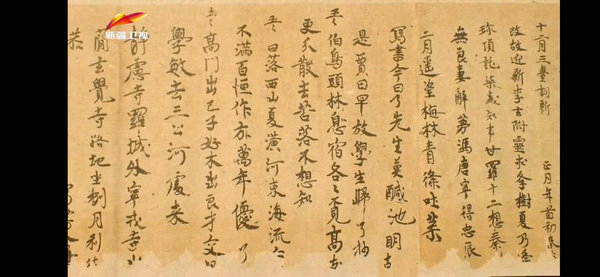

URUMQI -- What was school life like in China's Xinjiang in ancient times? A document unearthed in 1969 in Astana ancient cemetery in Turpan, eastern Xinjiang, offers an intriguing glimpse.
The document is a 5-meter scroll, written by Bu Tianshou, a 12-year-old student in 710 AD, Tang Dynasty. Bu transcribed several chapters of two books -- the annotations of the Analects of Confucius by famous scholar Zheng Xuan and The Thousand Character Classic, a Chinese poem used as a primer for teaching Chinese characters to children in ancient China -- both were assigned readings at that time.
"Interestingly, he wrote a doggerel at the end of the scroll: Today's homework is finished. Teacher, please don't delay the class and let us go home early. It has made the scroll much more lively," said Dilinur Maiming, a docent at Turpan Museum.
From the perspective of philology, Zheng Xuan's annotations of the Analects of Confucius were lost after the Tang Dynasty, but Bu's copy and other documents unearthed in Turpan have provided valuable information for the study of the classic works of Confucianism, said Chen Aifeng, deputy dean of the institute of Turpan studies.
"A relatively complete education system has been established in the Tang Dynasty. Most documents of Zheng Xuan's annotations of the Analects of Confucius unearthed from the tombs of Astana are copies written by students, indicating that education in Xinjiang during the Tang Dynasty was influenced by the Central Plains culture," Chen added.